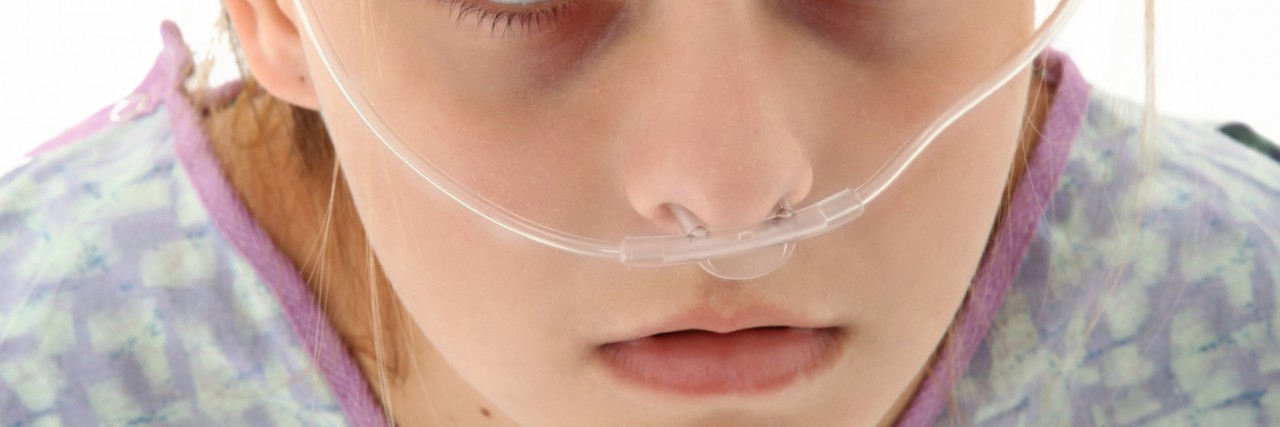When I was first diagnosed with pulmonary hypertension, I was surprised to learn that supplementary oxygen, along with other medical equipment, is sometimes used for costumes. I soon learned that people were “dressing up” as characters with a disability for cosplay and Halloween. “The Fault in Our Stars” came to movie theaters shortly after my diagnosis, so there was a sudden wave of teenagers wearing nasal cannuals attached to nothing. Unlike me, and so many other people with pulmonary hypertension, they were not tethered to a heavy oxygen tank. Something that has been a huge obstacle, pain in the butt, and a medical device to help me breathe, had become a prop. A fashion statement.
Some of you may be thinking, “What is the big deal? It is a costume.” Maybe I am sensitive. But maybe costumes that involve dressing up and pretending to have disability are insensitive and offensive.
I went to the mall with my boyfriend while I had to wear oxygen more frequently, I could hear young girls whisper “Hazel Grace!” behind my back. There they were, mocking me, and even worse, romanticizing pulmonary hypertension, the deadly disease that slithered into my life nearly three years ago. But my life isn’t a movie or book. This is real life, and I am actually sick. This isn’t a costume, and I can’t take off my illness when the party is over.
This is partly why Halloween and cosplay costumes surrounding a disability make me uncomfortable. Pulmonary hypertension is an incredibly heavy diagnosis. I don’t want something that has caused so much hardship to my family and me to be taken light of. If someone is wearing oxygen who isn’t sick, has never been sick, and doesn’t require oxygen, it also does very little to “raise awareness” for any real disease. It is just a costume. A piece of medical equipment that many people require to breathe, and live, has now been equated to a Halloween wig or a tube of lipstick.
Those of us who require supplementary oxygen know how difficult it can be to navigate through life and day-to-day activities while using it. When I required oxygen 24/7, I had to plan how many oxygen tanks I would need. Every week I had to determine how many I would need to get me through doctors appointments, and the rare social outing. I also had to calculate how long a bottle would last me and decide how many bottles I would need for a specific activity. Going to the mall cost me about two to three small tanks. Sometimes my oxygen tanks would malfunction, and I’d be left without supplementary oxygen. An alarm would go off on my tank (as if enough people weren’t staring at a 20-something-year-old tugging around an oxygen tank already!). These situations were scary, embarrassing, and extremely taxing on my soul and spirit.
Using disabilities as a costume also glamorizes or creates caricatures of disabilities and illnesses. I follow a few young ladies on social media who have beautiful short hair and happen to wear oxygen. When one decided to cut her hair shorter, out of convenience (because pulmonary hypertension can make it very difficult to shower, wash, and style your hair) a bunch of people commented that she looked like “Hazel Grace.” My stomach dropped. She was not wearing a costume. This young woman has all the beauty and pose of Audrey Hepburn and Grace Kelly. It bothered me that people were not able to see her as anyone else, or even worse, to see her for herself.
I don’t think dressing up as someone with a disability is harmless fun. For anyone who was planning on using a disability as a Halloween or cosplay costume, please reconsider. Disabilities and illnesses are not a prop, and they deserve to be treated with sensitivity, compassion, and understanding.
This article was originally published on Pulmonary Hypertension News.
We want to hear your story. Become a Mighty contributor here.
Image via Thinkstock.

